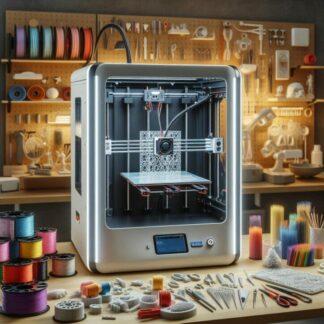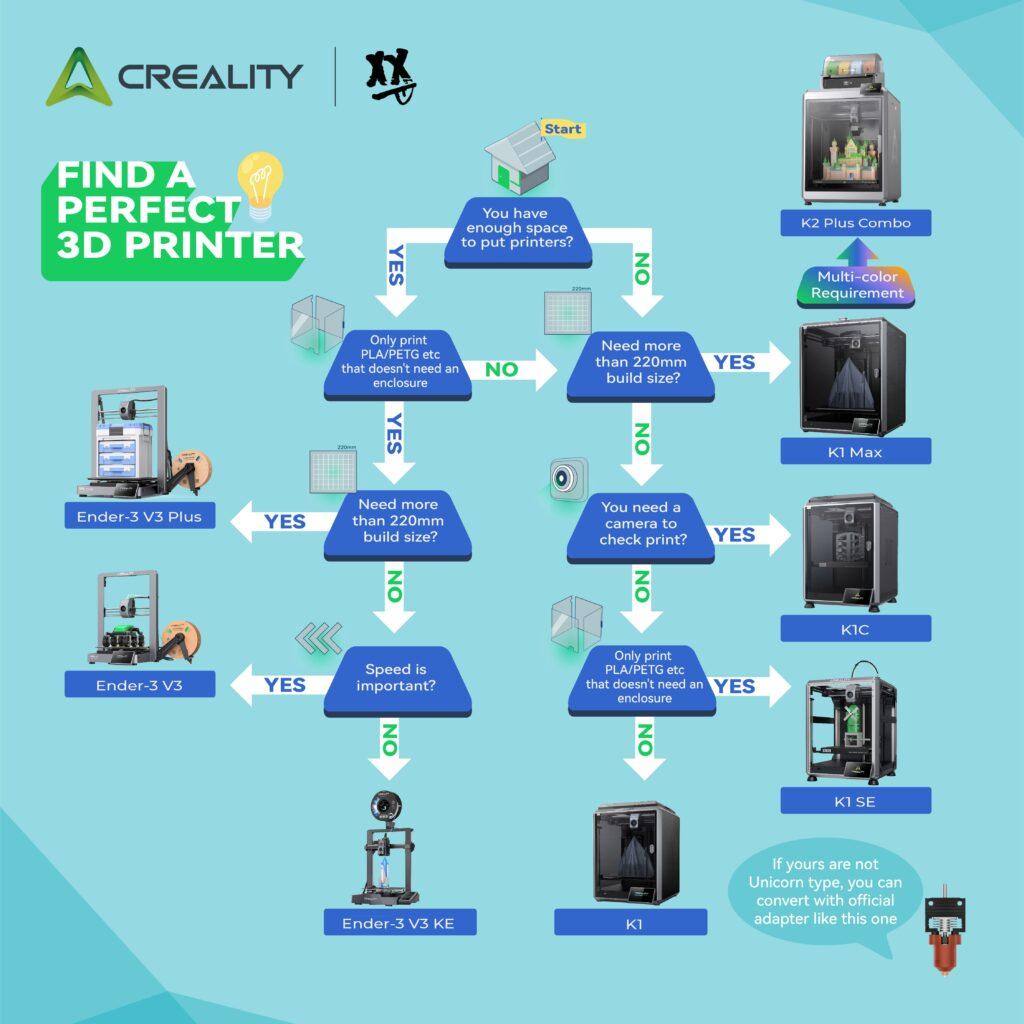Discover how desktop 3D printers are becoming more affordable and easier to use, opening doors for hobbyists and small businesses to create, innovate, and thrive.

A New Era of Making: The Story of the Desktop 3D Printer
Not long ago, 3D printers were big, expensive machines tucked away in high-tech labs. They were used by engineers, scientists, and big companies for prototypes and industrial work. Most people never even saw one in real life.
But times have changed.
Today, desktop 3D printers are popping up in home offices, garages, classrooms, and small businesses all over the world. They’re smaller, cheaper, and much easier to use than they used to be. And this change is unlocking a whole new wave of creativity and innovation.
This isn’t just a tech trend. It’s a transformation in how we create.
Let’s dive into how desktop 3D printers are becoming more accessible, why that matters, and what the future holds for makers, dreamers, and doers everywhere.
What Exactly Is a Desktop 3D Printer?
First, let’s break it down.
A desktop 3D printer is a machine that can create three-dimensional objects from digital files. Instead of printing ink on paper, it prints layer by layer with plastic, resin, or other materials to build something solid.
It’s about the size of a microwave and can sit right on a desk or workbench. People use them to make everything from phone holders and jewelry to parts for robots or models for architecture.
At its core, a desktop 3D printer turns ideas into real objects you can touch and use.
How 3D Printing Became More Affordable
Back in the early 2000s, a 3D printer could easily cost tens of thousands of dollars. Even by 2010, you might have had to pay $2,000 or more for a basic model. Today? You can find beginner-friendly printers for under $200.
What caused the price drop?
1. Open-Source Innovation
The open-source RepRap project, started in 2005, changed everything. It allowed people to build their own 3D printers and share improvements freely. This sparked a global community that helped push prices down.
2. Mass Production and Competition
As more companies jumped into the market—like Creality, Anycubic, and Prusa—competition increased and manufacturing scaled up. More units = lower prices.
3. Cheaper Materials
Filaments like PLA (a plastic made from corn starch) are affordable and widely available. No need for fancy metals or industrial plastics for most projects.
In short, what once cost thousands is now within reach for a teenager saving up their allowance.
Easier to Use Than Ever
When 3D printers first hit the market, they came with a steep learning curve. You needed to know how to build, calibrate, and repair the machine. Software was clunky. Mistakes were common.
Today? The story is totally different.
1. Plug-and-Play Simplicity
Modern printers often come pre-assembled or mostly built. You can be printing within minutes of unboxing.
2. User-Friendly Software
Programs like Ultimaker Cura, PrusaSlicer, and TinkerCAD make it easy to design or prepare files. Many are free and super intuitive.
3. Better Reliability and Auto-Leveling
One of the hardest parts used to be bed leveling (getting the print surface flat). Newer printers do this automatically. That means fewer failed prints and less frustration.
4. Online Communities and Support
From YouTube tutorials to Reddit forums, there’s help everywhere. Got a problem? Chances are, someone else already solved it and made a guide.
All of this means beginners can get started without being a tech wizard.
More Versatile Than Ever
Early 3D printers mostly worked with one type of plastic. Now? The variety is incredible.
1. Materials Galore
You can print with:
- PLA (biodegradable plastic)
- ABS (used in LEGO bricks)
- TPU (flexible rubbery plastic)
- PETG (durable, water-resistant plastic)
- Even wood, metal, or carbon fiber-infused filaments
2. Bigger Build Sizes
Today, printers can make larger objects without sacrificing detail. Some even have modular parts to expand their capacity.
3. Multi-Material Printing
Some advanced desktop printers can print with two or more materials at once—like flexible joints and hard parts in the same print.
4. Finer Details and Smoother Prints
Better motors, improved nozzles, and smarter software mean sharper prints. No more chunky lines or rough edges.
The result? You can print more kinds of things with better quality than ever before.
Why This Is a Big Deal for Hobbyists
If you’ve ever had an idea and thought, “I wish I could make that,” 3D printing is your tool.
For hobbyists, this tech is a dream come true:
– DIY and Custom Projects
You can design your own action figures, cosplay props, home decor, or tools. No need to wait for a company to make it—you can do it yourself.
– Learning and Experimenting
3D printing is hands-on learning. It teaches design, engineering, creativity, and problem-solving in a fun, exciting way.
– Repair and Upcycle
Why toss something broken when you can print a replacement part? Fixing things becomes easy.
– Affordable Fun
For under $300, you can have a powerful creative machine in your home. Compared to other hobbies, it’s a solid investment.
Empowering Small Businesses
It’s not just a tool for play. 3D printing is a serious game-changer for entrepreneurs.
– Rapid Prototyping
Got an idea for a product? You can design, print, and test it in days—not months. No need for expensive factory samples.
– On-Demand Production
Small business owners can print items as they sell, reducing waste and storage costs.
– Customization
You can offer personalized products—from nameplates to custom phone cases. Customers love one-of-a-kind items.
– Lower Startup Costs
Starting a business used to mean big investments. With 3D printing, you can start small and scale up.
From jewelry makers to drone designers, the possibilities are endless.
Real-World Success Stories
Let’s look at how real people are using desktop 3D printers to create and grow:
1. The Garage Inventor
Emma, a stay-at-home mom, used a 3D printer to prototype her ergonomic kitchen tool idea. Today, she sells it on Etsy and Amazon.
2. The Student Entrepreneur
Josh, a high school student, started printing custom keychains and selling them at local markets. He made enough to pay for college apps.
3. The Creative Tinkerer
Luis, a retired engineer, uses his 3D printer to build parts for model airplanes and custom gadgets for his home. He even runs a YouTube channel teaching others.
These are just a few examples of what’s possible when access meets imagination.
What the Future Holds
So, where are we headed?
1. Even Lower Prices
As technology improves and demand grows, expect prices to drop further. More people will be able to afford high-quality machines.
2. More Plug-and-Play Systems
Future printers will be even easier to use—like home appliances. Just plug in and press start.
3. Smarter Software
AI-driven slicers will suggest print settings, detect problems before they happen, and auto-fix designs.
4. Expanded Materials
We’ll see more eco-friendly options, stronger blends, and even food-safe or medical-grade materials for home use.
5. Wider Adoption in Schools and Homes
As more students learn with 3D printing, a new generation of makers will grow up seeing it as normal—just like we do with computers today.
Getting Started: What You Need to Know
Feeling inspired? Here’s a quick starter guide:
- Pick a Printer – Look for beginner-friendly models like Creality Ender 3, Anycubic Kobra, or Prusa Mini.
- Get the Right Filament – Start with PLA. It’s easy to use and safe for indoor printing.
- Use Free Software – Try TinkerCAD for design and Cura or PrusaSlicer for slicing.
- Start Simple – Print small tools, toys, or upgrades. Learn as you go.
- Join the Community – Find Facebook groups, Reddit threads, or local maker spaces.
Mistakes will happen. That’s part of the fun. Every failed print is a lesson learned.
Final Thoughts: A Revolution at Your Fingertips
We’re in the middle of a quiet revolution. Desktop 3D printing is no longer just for experts or engineers. It’s for anyone with an idea and a bit of curiosity.
Affordable. Easy. Versatile. These machines are changing how we create, learn, fix, and build.
Whether you’re a hobbyist with a passion project or a small business owner chasing a dream, 3D printing gives you the power to make it real. And that’s the heart of innovation.
So go ahead. Dream it. Design it. Print it.
The future is sitting right on your desk.

